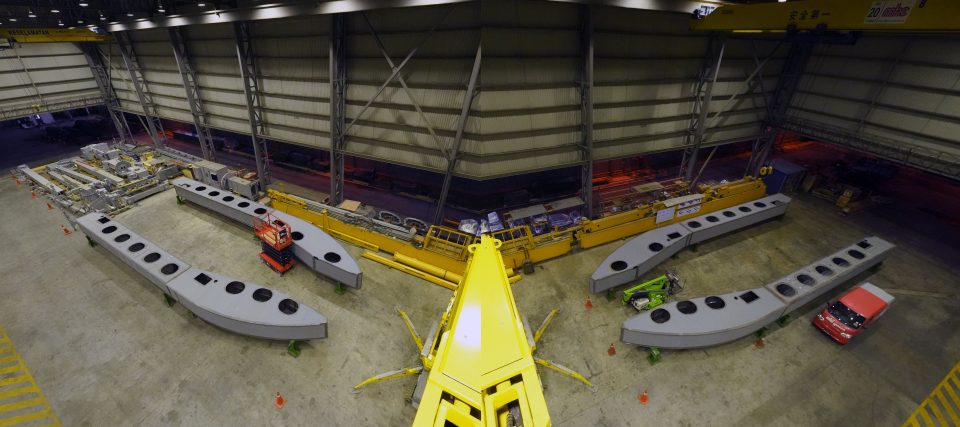
Inspired by a whale shark’s wide mouth – which scoops up whatever is in front of it – Richard’s company Ran Marine created the WasteShark.
“I liken it to a Roomba for water. It’s an autonomous machine that scoops up pollution out of water on the surface level.”
“That pollution could be plastic or any debris or biomass like algae,” Richard adds.
Why is there a robot shark at Canary Wharf?
The Aqua Libra WasteShark was deployed in London’s Canary Wharf this week as part of a project to clean up the area and make it a healthier, more biodiverse environment.
Canary Wharf is a thriving financial district located on London’s River Thames. 120,000 people visit every day to work or shop there.
The Canary Wharf Group, which developed and manages the area, have done a lot to reduce single-use plastics. But the high footfall means it’s easy for coffee cups and lunch wrappers to end up in the water.
Currently, only 14 per cent of English rivers meet good ecological status. The country’s waterways are plagued by pollution from agriculture, sewage, roads and single-use plastics.
In fact, it is estimated that 8 million tonnes of plastic enter our oceans every year, much of it being swept from cities to the sea through rivers.
“The way we designed the WasteShark was that it was zero impact on the environment that it’s working in,” says Richard.
“You’ll see a lot of boats that go out and clean are normally diesel-powered or mechanically powered so there’s a bit of oil and pollution going back into the water while they’re cleaning,” he explains.
WasteShark is completely electric and is so quiet it doesn’t disturb wildlife, according to the Ran Marine CEO.
“Ducks and swans swim away from it. We’re not fast enough to catch fish. So it really is a low-impact solution to remove pollution out of the water.”
What can WasteShark do?
The WasteShark is battery-powered and travels up to 5km on one battery. That amounts to around 8-10 hours of cleaning time. A daily feed for the WasteShark is around 500kg of debris or the equivalent of guzzling roughly 21,000 plastic bottles.
Any rubbish collected in the robot’s belly is then brought back to shore, sorted and recycled or disposed of responsibly.
Whilst it’s filling up, the WasteShark also collects samples of the water.
“We’re collecting water quality data from all around the world and aggregating that [so we can see] what it looked like last week, last year. Is the water getting cleaner? Is it changing? Is there a potential algae bloom?” explains Richard.
“It’s kind of our dream to deploy these things around the world to clean up while we’re asleep, make a difference and hopefully make an impact on our environment.”
Source euronews.green



